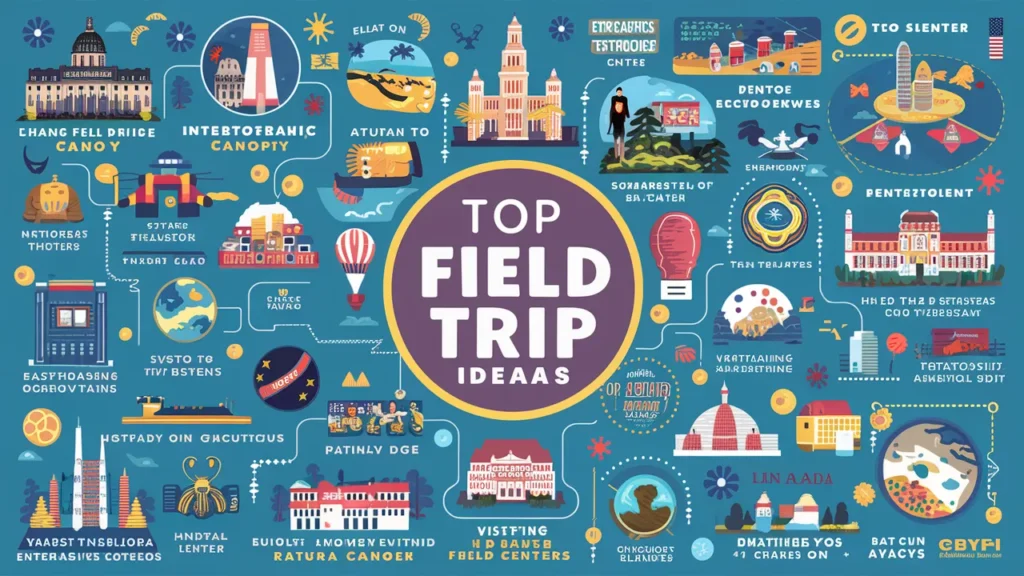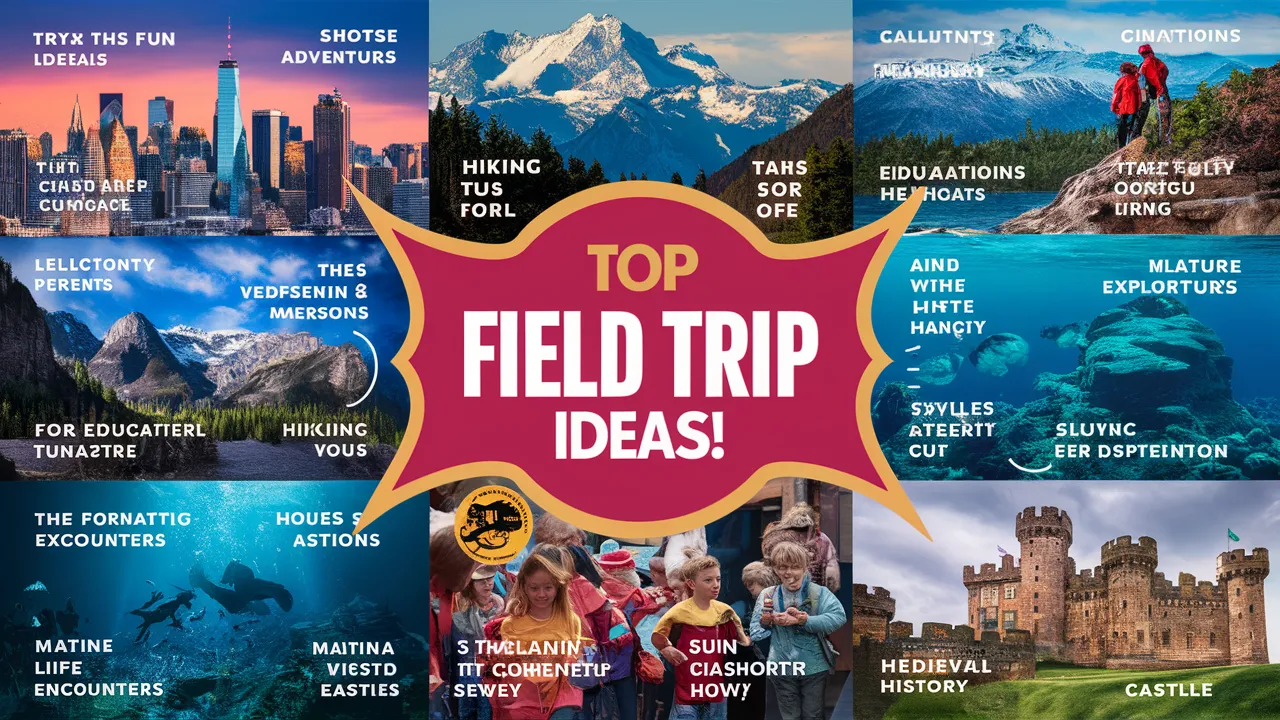Introduction
Field trips are a pivotal part of the educational experience, providing students with opportunities to engage with the world beyond the classroom. They foster curiosity, enhance learning, and develop vital social skills. This article will explore various field trip ideas that combine education with fun, ensuring memorable experiences for students of all ages.
Understanding the Importance of Field Trips
Field trips serve as an excellent bridge connecting theoretical knowledge with practical experience. They provide students with a unique opportunity to observe and engage with the subject matter in real-world contexts. This experiential learning enhances retention and understanding, making lessons stick far longer than conventional classroom teaching.
Bridging the Gap Between Classroom Learning and Real-World Experience
One of the primary purposes of a field trip is to consolidate what has been learned in the classroom. For example, when students visit a zoo after learning about animal habitats, they witness firsthand what they have studied. This will enable them to grasp complex concepts in biology through observation and interaction.
Moreover, field trips often stimulate curiosity and spark a lifelong interest in subjects. The excitement of being outside the classroom in a new setting ignites a passion for learning that can lead to greater academic engagement later on.
Enhancing Social Skills and Teamwork Through Field Trips
Aside from educational benefits, field trips also play a crucial role in enhancing social skills among students. Working together during various activities encourages teamwork and communication, essential skills for future endeavors.
Field trips allow students to interact with their peers in a less structured environment. This opens up opportunities for collaboration and friendship, making learning enjoyable and fostering a sense of community among classmates.
Planning Your Field Trip for Maximum Learning and Fun
Planning is crucial when arranging a field trip to ensure that it is educational, enjoyable, and safe. Various factors determine the success of a field trip, from the choice of location to the activities planned. Here are some tips to guide you through the process.
Key Factors to Consider When Choosing a Field Trip Destination
Assessing the educational value of a destination is paramount. Select locations that enrich the curriculum and provide hands-on learning experiences. Factors such as distance, cost, and accessibility are also important to consider. Ensuring the destination offers interactive exhibits or guided tours can greatly enhance the learning experience.
Additionally, consider the age group of the students. A destination that is too advanced or simplistic may not engage them effectively. Finding a location conducive to group learning will ensure you meet the diverse interests of all students involved.
Incorporating Educational Goals into Your Field Trip Plan
Setting clear educational goals will help frame the field trip’s purpose. Discuss objectives with students beforehand, guiding them on what to look for and learn during the experience. Encourage them to take notes or create a project afterward to share their insights and reinforce what they’ve learned.
Engaging students before, during, and after the trip allows for deeper comprehension. Keep communication lines open with teachers and parents to make the field trip a cohesive part of the educational journey.
Top Field Trip Destinations for Science Lovers
For students fascinated by the world around them, science-focused field trips can be particularly thrilling. Here are some fantastic destinations that provide incredible hands-on experiences.
Exploring Natural History Museums and Planetariums
Natural history museums allow students to explore topics ranging from paleontology to ecology. Exhibits featuring dinosaurs, fossils, and various ecosystems provide a visual and tactile learning experience. These museums often have interactive displays that help solidify challenging concepts in a fun way.
Planetariums are another excellent option for science enthusiasts, where students can learn about astronomy and the wonders of the universe through immersive shows and interactive exhibits. Such experiences inspire students to look towards the cosmos, fostering a sense of wonder about space science.
Discovering the Wonders of Science at Interactive Exhibits
Hands-on science centers and discovery museums create a fun atmosphere where students can get involved directly. Activities such as conducting experiments or engaging with exhibits lead students to discover scientific principles through playful interaction.
These interactive settings are designed to encourage experimentation and exploration, which aligns perfectly with educational goals and fosters creativity amongst young minds.

Field Trips That Bring History to Life
History becomes tangible when students visit historical sites and landmarks. Field trips can turn the pages of a textbook into a living story, making the facts come alive through immersive experience.
Visiting Historical Sites and Monuments
Exploring important historical sites and monuments allows students to grasp the significance of history in real life. Walking through historic battlefields, colonial towns, or ancient ruins adds layers of context to their studies, igniting a connection that textbooks alone may not achieve.
These sites often feature guided tours providing detailed narratives to enhance understanding. They also offer engaging activities, such as reenactments, that can foster a deeper emotional connection to the past.
Learning About Cultures at Ethnic Museums
Ethnic museums showcase diverse cultures and histories, providing insight into traditions and lifestyles different from their own. This exposure fosters tolerance, empathy, and appreciation for diversity.
Through interactive exhibits showcasing art, food, and crafts, students can learn about the contributions of various cultures to society. Encouraging discussions about cultural differences promotes inclusivity and broadens worldviews.
Artistic Adventures: Field Trips for Art Enthusiasts
Art field trips cater to students with a passion for creativity and expression. These excursions can cultivate an appreciation for various art forms while allowing students to unleash their creativity.
Exploring Art Galleries and Craft Workshops
Art galleries provide exposure to a range of artistic styles and techniques, encouraging students to reflect on their personal preferences. Guided tours can enrich this experience by providing context about the artists and their intentions.
Crafting workshops, on the other hand, invite students to participate actively in creating their art, whether it be painting, pottery, or even digital media. These hands-on experiences can spur creativity and reinforce lessons learned in the classroom.
Unleashing Creativity at Interactive Art Studios
Interactive art studios often offer workshops where students can experiment with various artistic techniques. Working alongside artists, they can explore their own creative potential while learning about different materials and processes.
In such dynamic environments, students are encouraged to express themselves freely, often leading to unique outcomes that showcase their individuality and creativity. These experiences can be highly motivating and inspire students to pursue their artistic interests further.
Conclusion
Field trips can serve an essential role in education, blending fun and learning seamlessly. By incorporating these ideas into your planning, you can provide students with unforgettable experiences that enrich their knowledge and foster a love for learning that lasts a lifetime.
FAQs
What are some good field trip ideas for elementary students?
Popular field trip ideas for elementary students include visiting local zoos, museums, science centers, and historical landmarks. Nature hikes and farm visits are also great options for hands-on learning.
What are the best field trip ideas for high school students?
High school students often benefit from trips to universities, career fairs, art galleries, and government institutions. Field trips focused on community service or environmental conservation are also excellent choices.
How do you plan a successful field trip?
Start by choosing a destination that aligns with your educational goals. Ensure transportation and permission slips are arranged, and create a schedule that allows for structured learning while leaving time for fun.
What are some budget-friendly field trip ideas?
Consider local parks, nature reserves, or community service projects. Many museums offer discounted group rates or free admission on specific days, making them affordable field trip options.
How can virtual field trips be incorporated into learning?
Virtual field trips offer students the opportunity to explore places like museums, national parks, or historical sites from anywhere. They can be incorporated into lessons through guided tours, videos, or interactive activities.
